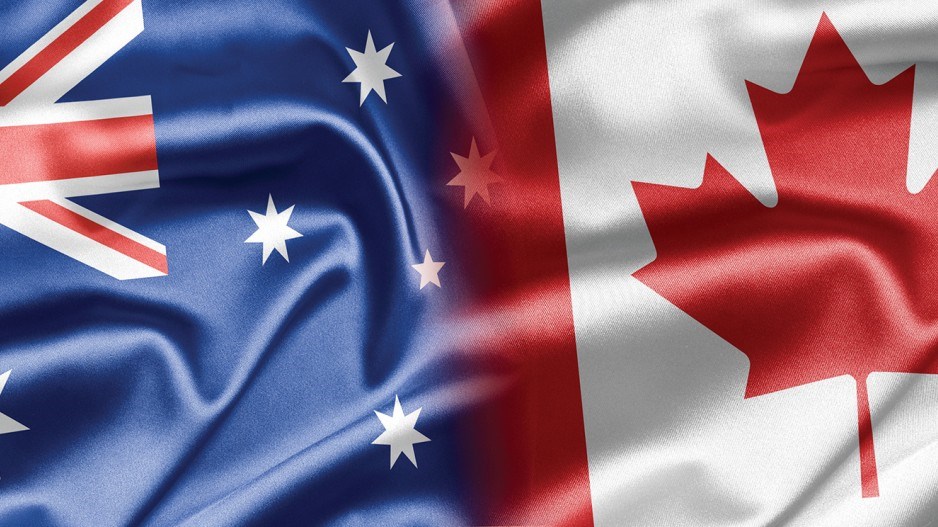Canada and Australia share much of the same heritage and history, and these days prime ministers Stephen Harper and Tony Abbott seem to be each other’s best friends – but their strategies in Asia couldn’t be further apart, at least when it comes to concrete results.
Australia grasped the reality some time ago that its future is inexorably linked with Asia. Australia, like Canada, still looks to the United States for its security umbrella and as an important trading partner. The U.S. is Australia’s No. 3 trade partner, after China and Japan, but unlike its trade with China, Japan and Korea, Australia has a large trade deficit with the U.S.
Canada is clearly in a different geopolitical situation from Australia when it comes to both economic and security relations with the U.S., but Canada still needs to invest in strengthening ties with Asia, starting with trade and investment, but going beyond economics to a broader overall commitment.
There is hope. After the early years of neglect under the Harper government, Ottawa has been playing catch-up in its commitment to Asia. Mr. Harper’s visit to China last November was, by all accounts, a success. The visit was another step in repairing a frayed relationship with China and resulted in $2.5 billion in completed or potential contracts for Canadian companies.
Canada was also prompted to ratify the long-delayed Foreign Investment Promotion and Protection Agreement with China. Lastly, mechanisms for an annual strategic dialogue were established along with the creation of a Chinese currency trading hub in Toronto – the first in North America. Assessing the results, Chinese Ambassador Luo Zhaohui declared in the Globe and Mail that in 2014, “booming China-Canada relations achieved remarkable progress.”
However, just days after Harper left China, Australia – one of Canada’s key competitors in China, and in Asia generally – announced that after 10 years of negotiations it had concluded a bilateral free trade agreement. Canada, meanwhile, is still mulling China’s invitation to begin negotiations, and a 2012 study, carried out by both governments to explore areas for closer economic co-operation, has sat gathering dust on the shelf. While Canada shuffled a step or two forward, Australia has taken a giant leap. In relative terms, Canada is now even further behind a key competitor.
Much has been made of the growth of Canadian trade with China over the past few years. Our exports to China have more than tripled in absolute terms since 2004, from $6.8 billion to almost $21 billion in 2013, despite Canada running a significant trade deficit.
But our market share of China’s imports has stagnated, remaining at just over 1% during this period. By contrast, Australia’s market share has more than doubled during this period, increasing from 2% of China’s imports to 5%, with Australian exports to China reaching $95 billion in 2013. The conclusion of Australia’s trade agreement with China marks the second deal between China and a developed country, but the first with real economic significance (New Zealand’s was the first).
Reportedly the deal will be worth $18 billion over the next decade to the Australian economy. It brings a range of benefits to Australian exporters: 85% of Australian imports will be duty-free upon entry into force of the agreement; tariffs on thermal and coking coal are to be eliminated within two years (a key area where Australia competes with Canada); tariffs on wine, seafood and meat will be progressively removed; and a range of service providers will be able to do business more easily in China.
To mitigate concerns about the level of Chinese investment, Australia will be able to screen proposals from private investors involving agricultural land, and Australia’s equivalent of Invest in Canada will still screen proposals from state-owned enterprises. In almost every area where Australian and Canadian products compete in the Chinese market, Australian producers will now have an advantage, either immediate or over time.
But China is not the only Asian market where Australia is well ahead of Canada in both market share and trade infrastructure. According to the Asia Pacific Foundation of Canada, Australia has 11 bilateral investment treaties with Asian countries. Canada, by contrast, has three.
Where Australia has eight free trade agreements with Asian countries either in force or concluded, Canada has just one (with Korea). Australia has decided to join the new Asia Infrastructure Investment Bank, led by China; Canada has remained silent. Canada and Australia are part of the Trans-Pacific Partnership negotiations, which will keep Canada in the Asian game, but we are far behind our competitive Commonwealth partner.
We may never be able to match Australia’s Asia-Pacific strategy, but there is much we can learn. We need to diversify our exports and compete better in Asia. Our competitors are not standing still, and neither can we. If we do not move forward, we will fall further behind. Australia has shown us that trade infrastructure counts, and that a deal can be reached with China. Let’s get moving.
Hugh Stephens is a senior fellow at the Asia Pacific Foundation of Canada and a fellow at the Canadian Defence and Foreign Affairs Institute. He is vice-chair of the Canadian Committee on Pacific Economic Cooperation.
Jonathan Manthorpe is on holiday.




